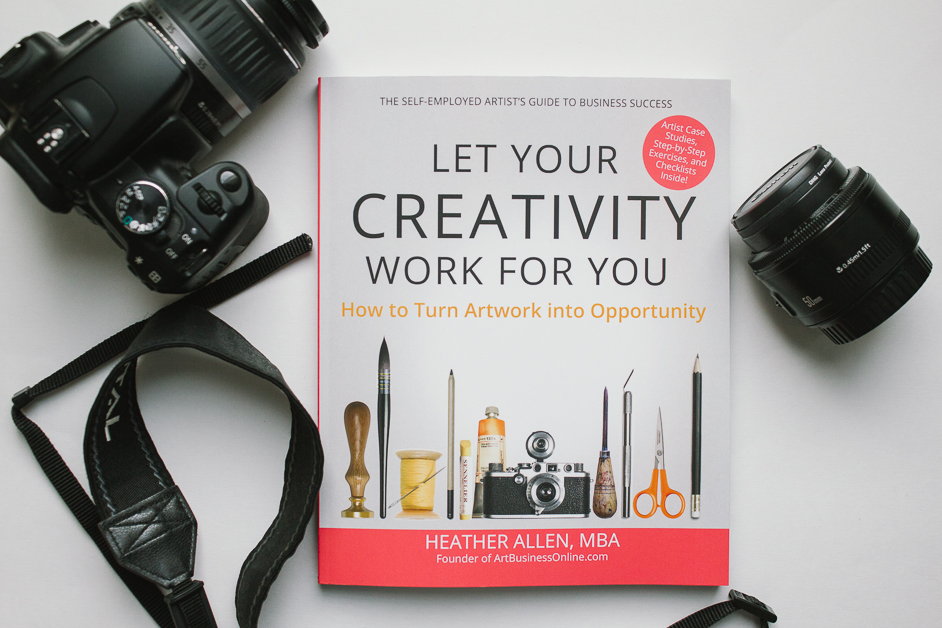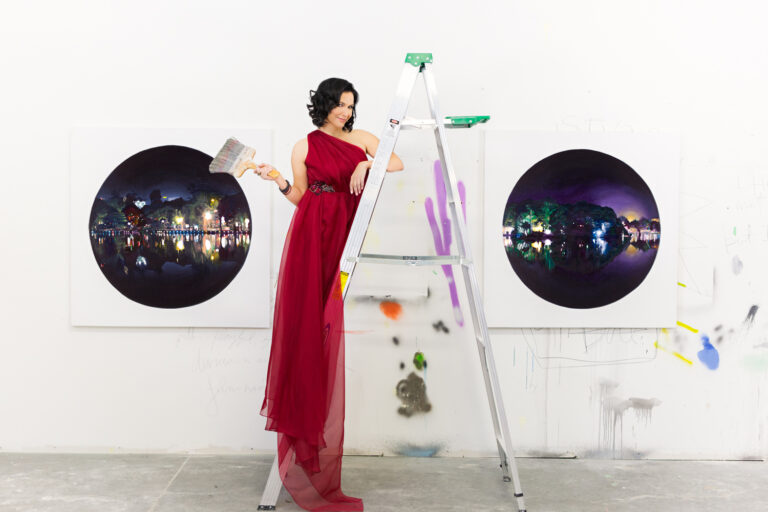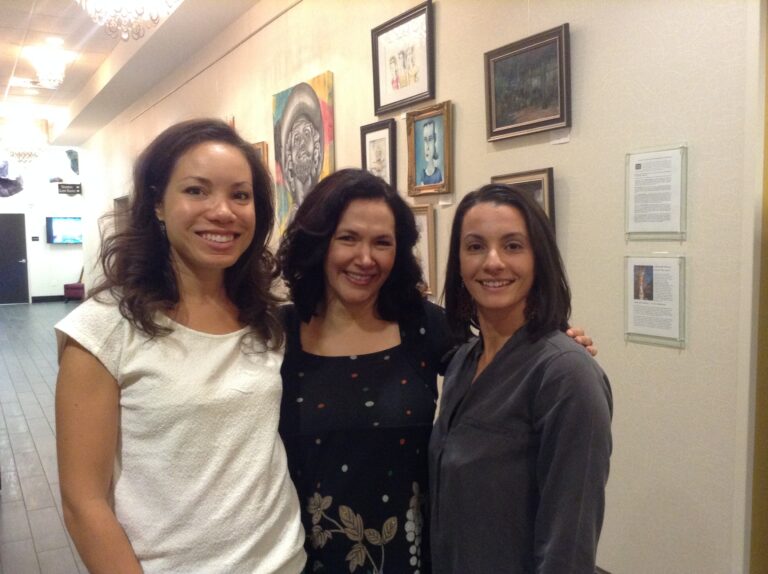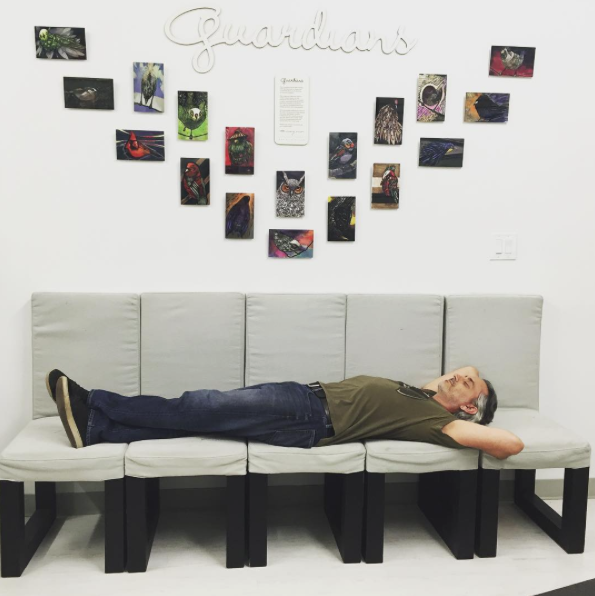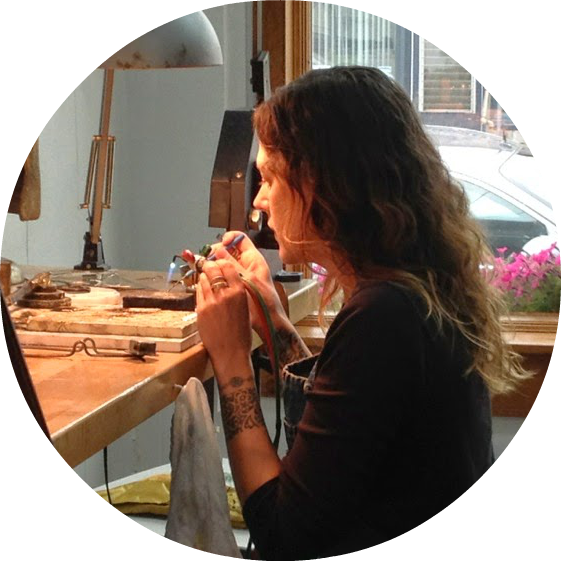
Amy Tavern has received several emerging artist honors including being named an American Craft Council “Searchlight Artist.” Amy’s jewelry has been published in numerous books such as “New Earrings” and “500 Silver Jewelry Designs” and was featured on the cover of Metalsmith Magazine’s 2012 “Exhibition in Print.” Amy completed a three-year artist residency at the Penland School of Crafts in 2012 and celebrated her tenth year in business. Her work can be found in galleries globally.
A Little Background Information: Today, Amy is in sunny California. But for the past three years, she has lived and exhibited in Europe, the US, and Iceland as a resident artist. She travels often, and started a new series on her blog called, “Now, I am Here,” which updates readers on Amy’s whereabouts. To make each new studio and place feel like home, Amy has learned to keep her working routine consistent, as she explains in this interview.
Q: How do you begin each day?
Every morning, I get up and I get to work around 9am. I tend to check my email when I get up in the morning—if there’s anything I need to answer right away, I do it while I’m drinking my coffee. And, I prepare a blog post at that time as well, and have those things done before I get into the studio so that I can focus on working in the studio.
Every day is different. It just depends on what I have on my plate at the moment which is usually a variety of things. Like, it might be mail orders that I’ve gotten through Etsy. It might be restocking a gallery or several galleries if something has sold during the month. Or, working on pieces for a show. Then, I might have a little commission to do, or a wedding ring—or something that’s more of a one-off.
I tend to juggle all of these things and I try to get the task-oriented things out of the way in the morning—like the Etsy order. Some days can be incredibly disjointed where I’m running around and juggling a lot of things at the same time.
Q: Does the discipline of time-management come naturally to you?
It does. I think of myself as a creature of habit and someone who enjoys routine. I’m very good at being self-directed and disciplined—I don’t necessarily need deadlines to get things done. So, that really helps when I’m trying to juggle a lot of things. It can also get in the way sometimes—especially when I’m making one-of-a-kind work because you never really know how things are going to go. You can say, “This is something I have to experience because this is how I work,” but blocks can happen randomly. Also, there can be these really incredible spurts of motivation and ideas, and then you don’t want to stop. It can be really hard to have a routine and be ridged in that way so I’m learning to be more flexible as well.
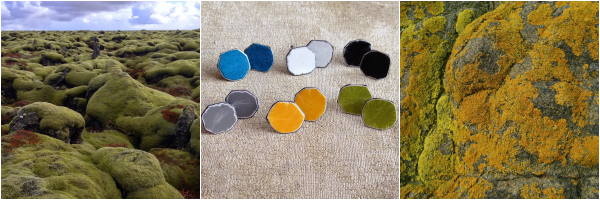
Q: What elements of your creative process are essential for getting into “flow” in your routine?
Coming in at the same time every day is a good start for me. Having a workspace that is organized is also a really good thing for me—it helps keep my mind clear. If I don’t straighten up my bench at the end of the night I’ll start in the morning.
I keep a list of what I’m doing, and I have a list of ideas written down. Sometimes it really helps to come in and choose the one thing I’m really excited about for the day and just focus on it. That excitement continues to motivate me and provides the energy I need to keep moving.
Q: In the past two years you’ve worked in Belgium and Iceland. How do you prepare your workspace in a new environment?
My studio is where I spend most of my time. It’s like a home to me, and it helps me to be grounded to create a beautiful space that inspires me. I like having books around me and I can lean on them when I need them. I think a lot of it is being grounded and feeling really comfortable—having things set up so there’s an ease to the space and I can move around efficiently to use it in the best way possible.
Q: Tell me about a studio space you were able to thrive in. What made it so special?
The [Penland] studio space was so big that I had the luxury of being able to separate different areas. Whereas before, I tended to be in a small space where all of those things happened at once—or didn’t happen at all: tables where I could have pieces laid out, or process works laid out. Or, a wall where I could hang things up to look at. I didn’t have that in former studios. It was nice to have all that room to put it all out there in front of me.
I like having things around me that I can see all the time because I believe that whether I’m thinking about it purposefully or not, I am processing my work every time I walk by something that’s in progress. It could be happening subconsciously or deliberately. Having different areas to separate different aspects of my process allowed me to organized my space. The space [at Penland] was so big that it allowed my ideas to grow because I had room to grow.
Q: How does travel inform your work?
I have come to realize that I am my best self when I am traveling. When I am traveling, I am looking at things in a different way than in my regular life. So, I feel like my senses are heightened, and I have an acute sensitivity to my environment. It’s very exciting and it’s fascinating. My power of observation becomes pretty intense and all of that observation turns into my work.
photo credits: amytavern.blogspot.com

